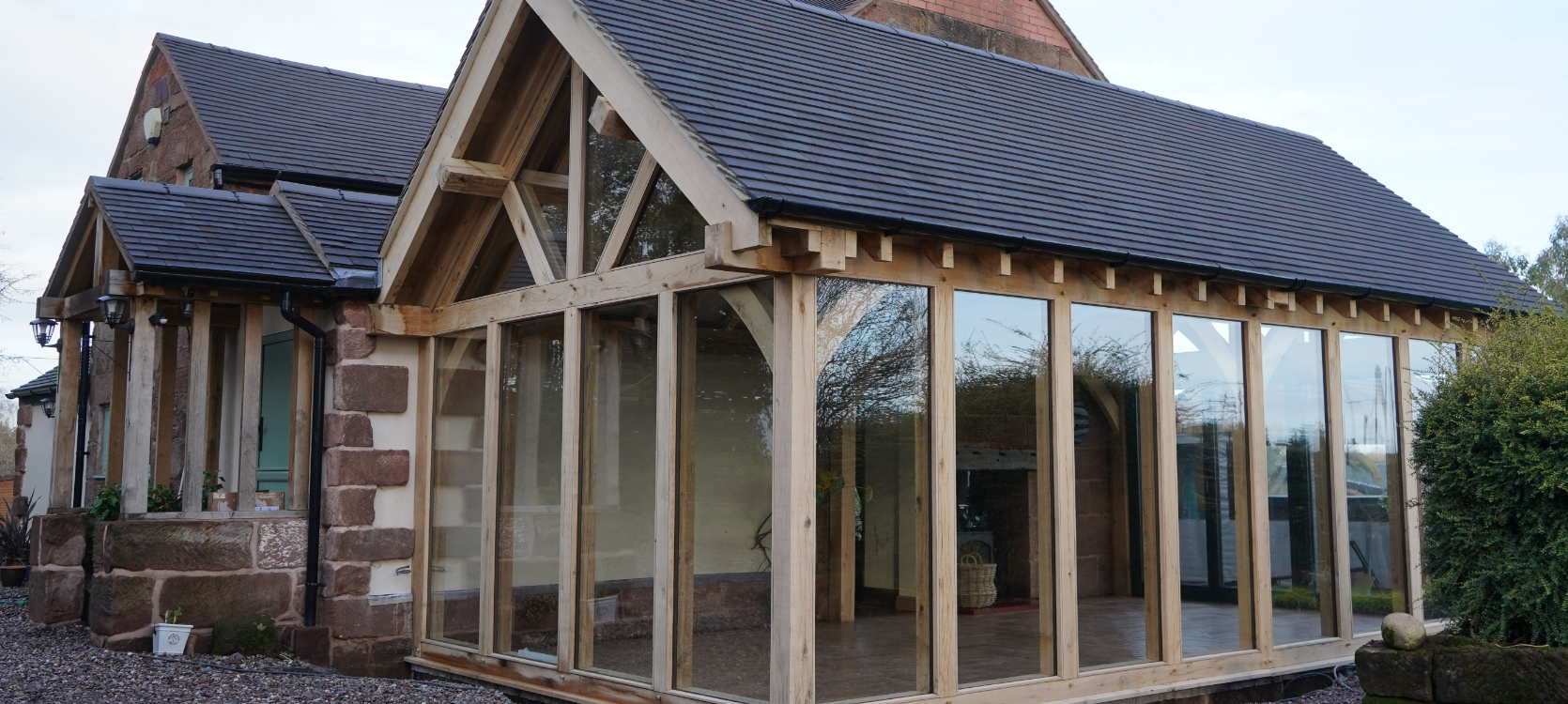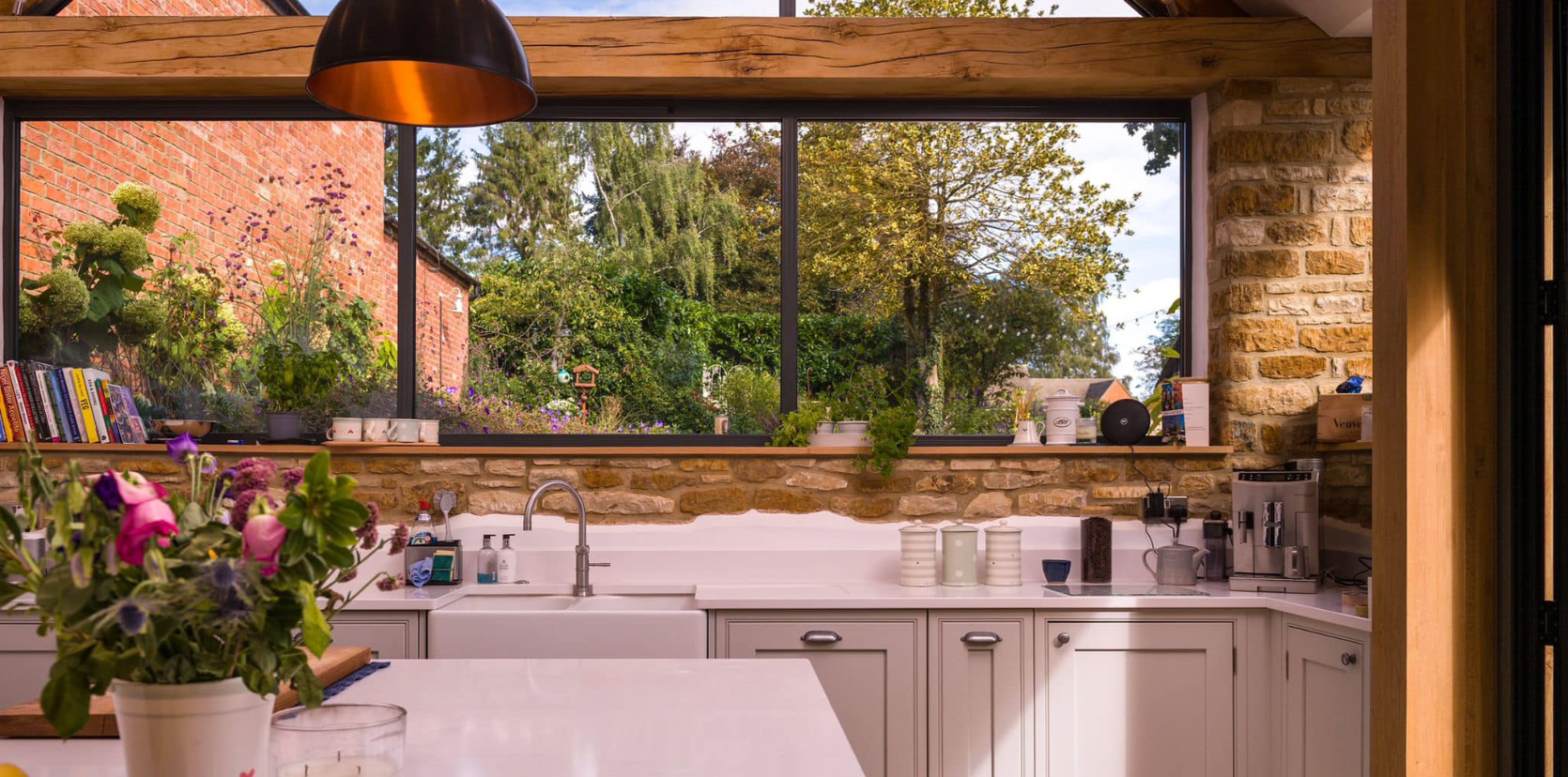Factors That Influence Oak Frame Extension Cost
Contents
There are a number of factors which may influence the cost of your oak frame extension, however planning for every eventuality is the best way to help keep costs in line with your budget.
Furthermore, incorporating oak into your frame extension not only lends a timeless aesthetic appeal but also provides durability, and excellent insulation, making it a wise long-term investment for your home.
To help you prepare for the expected (and unexpected!) costs prior to building your dream extension, here are some of the main factors that influence oak frame extension cost.
Consider the costs involved, and you’ll be able to make the most out of your renovation budget without having to go over-budget!

Extension Size
Extension size and complexity will, of course, affect the overall cost – making all processes from design to construction more expensive as the extension becomes larger and more complex. For example, a single-storey extension will be less expensive than a two-storey extension, where scaffolding and additional equipment for working at heights will be necessary. Alongside this single-storey extensions are much quicker to build compared to two-storey extensions.
Planning permission may also be required for extension sizes which surpass the conditions of permitted development; applying for planning permission will be another expense you’ll have to factor in for larger builds. If you need planning permission, contact your local planning authority.
Purpose Of The Build
How you plan on using your extension will also influence the amount of money required to build and fit it out. Additional facilities such as electrics and plumbing will be necessary for kitchen and bathroom extensions; windows, doors, and glazing will also come at an extra cost, especially if you’re using insulated glazing. Although, investing in quality materials and insulation will lead to cost-savings in the long-term thanks to the increased energy efficiency of the room.
You should factor in the cost of the interior design also – plastering, painting, and furnishing the extension.

Unforeseen Circumstances
Although you cannot plan for an unforeseen circumstance, you can prepare for one within your budget to ensure you’re able to cover the costs.
Factor in room within your budget for unexpected costs which could be catalysed by material shortages, projects running over deadlines, and more. Plus, if you don’t need to dip into your emergency funds, you’ll have a little left over at the end of your extension – it’s a win-win!
Location
The location of the build should be taken into consideration when looking at the influences on oak frame extension costs. This includes geographical location; for example, an extension project completed in the southern part of the UK is likely to cost more than one undertaken up north.
The location of the extension in relation to your house may also affect cost, especially if it crosses over from a permitted development to a construction requiring planning permission – for which you will have to apply for a small fee.
Additional costs could also be incurred if the location of your extension is on uneven ground (which must be levelled); if it is sat on public drains or sewers (this is most common for old, terraced houses, but you must apply to your drainage authority if this is the case); if it requires protected trees to be felled; and more.
The foundation of your house should also be in an adequate condition for an extension to take place.
Length of Construction
The majority of your budget will likely be spent on construction costs – this includes both labour expenses and materials.
A larger and more complex extension will require a lengthier construction, thereby costing more; this is true for both internal and external features of the build. The cost of construction can also be affected by the requirements of the project – trouble accessing the site and difficulties getting a hand on materials can draw out on the construction stage.
Working with timber frame extensions over traditional brick and mortar offers time-saving processes, however, since there is no drying time associated with timber constructions and much of the construction can be completed off site.
Building Materials
The majority of your budget will likely be spent on construction costs – this includes both labour expenses and materials.
A larger and more complex extension will require a lengthier construction, thereby costing more; this is true for both internal and external features of the build. The cost of construction can also be affected by the requirements of the project – trouble accessing the site and difficulties getting a hand on materials can draw out on the construction stage.
Working with timber frame extensions over traditional brick and mortar offers time-saving processes, however, since there is no drying time associated with timber constructions and much of the construction can be completed off site.
Whilst these aren’t the only factors to influence oak frame extension costs, they do offer an overview of the types of costs you can expect to encounter when adding an extension to your property. Budgeting for your extension project in light of the type and size of the extension, your location, and furnishing the extension will help you estimate costs for your new extension as a whole before you begin.
It’s important to bear in mind, however, that whilst undertaking an extension on your home can be an expensive investment, extensions ultimately increase the value of your home. See our ultimate oak extensions guide for more.
Interested in this article? Read others like it...
